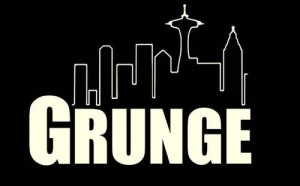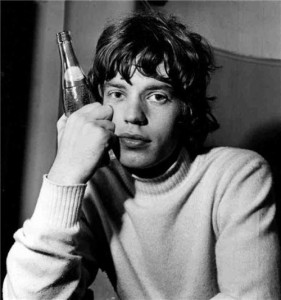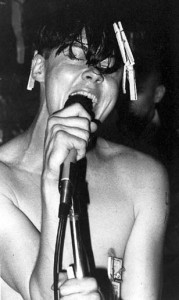There’s been a lot of talk about grunge since Kurt Cobain’s death in 1994. According to mass media and popular modernized sentiment, the grunge scene put Seattle on the map and revitalized rock music. Bands like Nirvana, those based in the Northwest and perpetuating this innovative sound, are said to have unleashed a new form of culture – grunge – that still carries remnants today.
Although the word “grunge” had been around for a while, the scene around the word started to develop sometime in the 1980s. Everett True, a journalist and musician, says the word “grunge” was used in the late 1950s to market a Johnny Burnette rockabilly album. And, truth be told, there are a lot of connections between rockabilly music and what later became known as grunge music. Later, the word appeared again in the music industry to promote a Green River album in 1988.
Green River was a band formed in Seattle, Washington in the early 80s. The band never found enormous commercial success, although its music is known to have inspired many future artists of the “Seattle sound” grunge movement. Shortly after the release and local success of Green River’s first album Come on Down, a Seattle-based record label produced the now-legendary Deep Six compilation album, which featured songs by, most notably, Green River, Melvins, Soundgarden, Malfunkshun, and Skin Yard. Stephen Tow, author of “The Strangest Tribe: How a Group of Seattle Rock Bands Invented Grunge” details the impact that this compilation record had on Seattle’s music scene.
The record signified not only the existence, but the viability of this generation of urban punk bands playing heavy, metal-infused music. For urban punks who were closet metal fans, Deep Six was a coming-out party. It became cool to be punk and admit liking metal.
[youtube http://www.youtube.com/watch?v=videoseries?list=PLB002AF93A057872E]
Within a few months, a Seattle fanzine morphed into Sub Pop record label just in time to ride some of the heat coming off of the local craze surrounding heavy metal. Sub Pop released its on compilation album, featuring alternative rock bands like Sonic Youth and Scratch Acid. Although different from the heavier Deep Six album, Sub Pop’s compilation stood out from what was nationally popular at the time, featuring darker, moody lyrics. It was Sub Pop that released Green River’s second album – the one released in 1988 and promoted as “grunge.” Here the movement began, a mishmash of metal, alternative rock, and punk music, rooted in the northwest of the United States. In an article about the rise and fall of grunge music, Bernie Alexander explains,
Bands like Mudhoney and Green River were first playing what would soon be labeled grunge. But these outfits were genuinely alternative. Alternative in the sense that it was drastically different than 1980s rock. While Def Leppard and Bon Jovi created rock music sugarcoated with layers of guitar tracks and monster vocals, grunge music was sharply more raw and devoid of the excessive production polish.
So what characterizes this grunge community? Who are the artists that are considered to be authentic contributors to the “Seattle sound?” While urban landscapes are known to generate hip hop and cities like Nashville are known to generate country music, what is it about Seattle and the 1990s that allowed this idea of “grunge” to flourish and continue to remain to this day?
A book by Clark Humphrey attributes the formation of the grunge scene to Seattle music’s status as a “folk phenomenon, a community of ideas and styles that came up from the street” rather than “something a couple of packagers in a penthouse office” dreamed of, as well as Seattle’s isolation from the mainstream record industry. In the late 1970s and early 1980s Seattle’s music scene was largely occupied by punk rock that was born out of a gay glam scene. A breeding ground for political lyricism as well as anger-fueled performances, metal and hardcore music fused with the punk rock scene of Seattle’s homosexual community. Perhaps the heat of Seattle’s political perceptions of homosexuality revved up the grunge movement. With this idea in mind, Humphrey’s notion that the grunge movement was thought of as “ideas and styles that came up from the street” rather than spawned by corporate America holds some bearing of truth. His use of the word “folk” is interesting though. Humphrey also notes Seattle’s isolation from the mainstream record industry. This isolation perhaps contributed to the development and sustenance of a distinctive music scene, born of the local culture and sentiments. A New York Times article from 1992 cites Seattle’s success in the grunge “industry” as having been “inspired and tempered by that city’s three principal drugs: espresso, beer and heroin.”
But still there lurks another question: who is grunge and who isn’t? There seems to be, generally speaking, a formula for a punk musician. Most of these musicians are men (there are several exceptions – in fact, it’s arguable that the grunge movement was much more gender-equal than most other music scenes. But, most of the music industry is ruled by men so grunge isn’t really an exception) who were born or at some point relocated to the Pacific Northwest. These men, perhaps surprisingly, usually come from pretty stable backgrounds. In researching some of the biggest grunge stars of the 1980s and 90s, I’ve discovered that most of them come from middle or upper class upbringings and attended college. Jeff Ament, former member of Green River and current member of Pearl Jam, was the son of the town mayor, went to Catholic school, and studied art at the University of Montana. Chris Cornell, songwriter and vocalist for Soundgarden, was the child of a pharmacist and an accountant and also attended Catholic school. Gibby Haynes, lead singer of the Butthole Surfers, was the son of a mildly successful actor who attended private, liberal arts college, was president of his fraternity, captain of the basketball team, and named “Accounting Student of the Year.” (Below are two photos showing the duality of Gibby Haynes)
Something that all of these musicians have in common is that they have often been described as somehow not fitting in. Ament dropped out of college and moved to Seattle to pursue music; Cornell formed an enormous dependence on drugs and alcohol; Haynes reportedly left his accounting job after being caught with a book he’d made full of images of abnormal medical ailments. It seems impossible to get through the biography of a grunge musician without reading the words “he never really fit in” or running into some pivotal action that defied the norms of the culture which the musician grew up in. Grunge musicians are also particularly political – legend Buzz Osbourne of the Melvins constantly citing the work of economist Thomas Sowell as his political philosophy, Jeff Arment campaigning for U.S. Senator Jon Tester and speaking out in favor of organic farming, and Nirvana’s Kurt Cobain using interview time to discuss feminism, bigotry, and racism, for a few examples. Another commonality between almost very grunge musician is drug use. From Kurt Cobain, to Green River and Mudhoney’s Mark Arm, to Malfunkshun’s Andrew Wood, every grunge musicians seems to at least have dabbled with, if not lost their life to, heroin.
It’s a right of passage. To be “grunge” you have to be politically, and perhaps artistically, educated (many of the musicians that did attend college studied some form of art). To be a grunge musician, you must be willing to give up the conventional American life of suburbia and the working class, that so many of these musicians had access to, instead to dress in cheap flannel and take very few showers. To be a grunge musician you must move to the Pacific Northwest, you must dabble in drugs, and you must find your way into the scene’s endless web of connected producers, musicians, and artists – a web once described by Mark Arm as being “inbred and ripping off each other’s ideas (Henderson).” You need not be raised poor or have undergone childhood trauma. You need not have been born in or around Seattle. Instead, you must choose grunge life in order to be authentic. Perhaps you would be perceived as more authentic if you were the child of the U.S. President and then left D.C. for Seattle to join a grunge band because you “never fit in.”
Once you’re grunge enough you show your status through different symbols. Members of the grunge community appear unkempt and if they do attain any wealth, they certainly don’t brag about that. It’s well established that Kurt Cobain resented his wealth and fame – as did many other grunge musicians, those accustomed to shopping for clothes in thrift stores as a part of their image. In this way, in this lack of division between how the musicians carry themselves, how they consume the music of their neighbors, how they constantly perform their values system and style of life, how each musician strictly adheres to these conventions, the Seattle grunge scene formulated a distinct art world.
The legacy of Seattle’s grunge movement in the 80s and 90s lives today through the bands born of that era that continue to tour, the bands born of grunge inspiration, and the flannel and ripped-jeans style that graces the bodies of today’s hipsters and punks.





